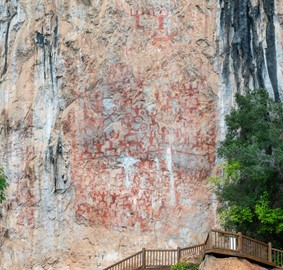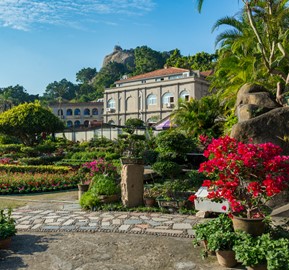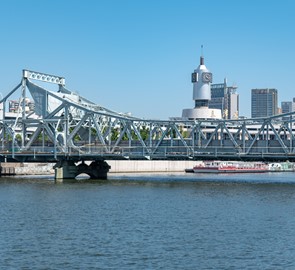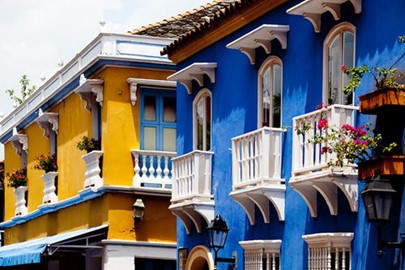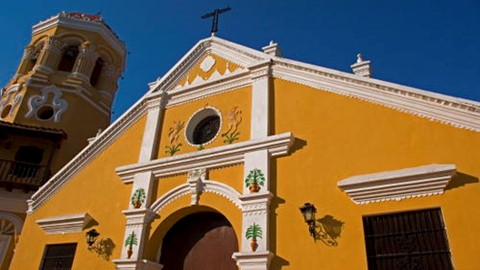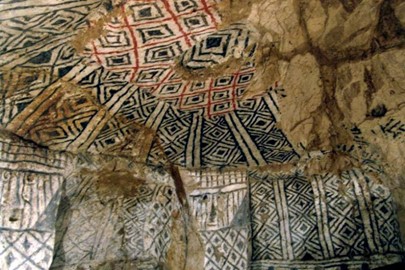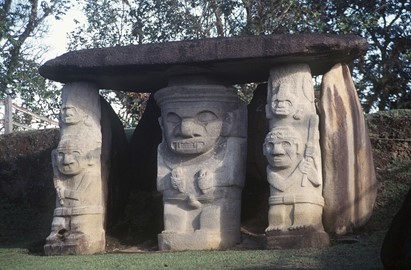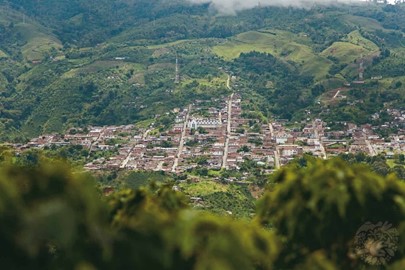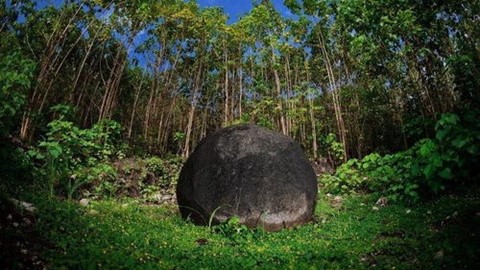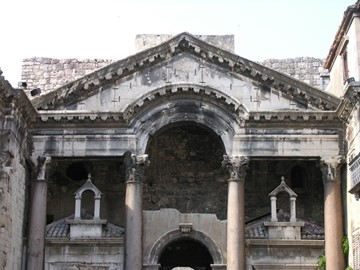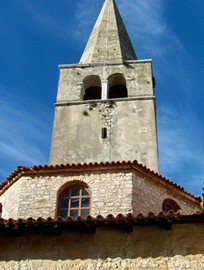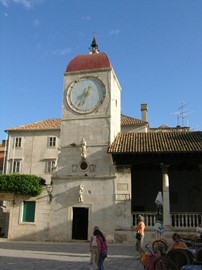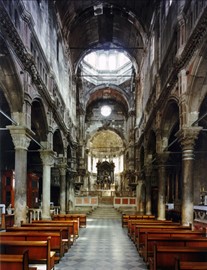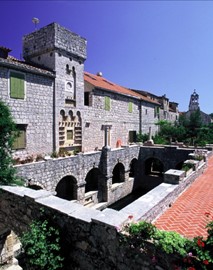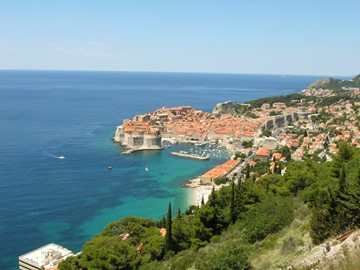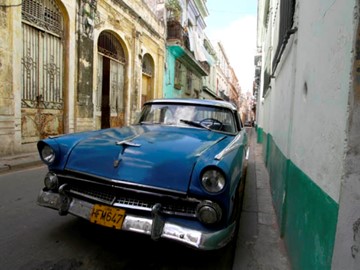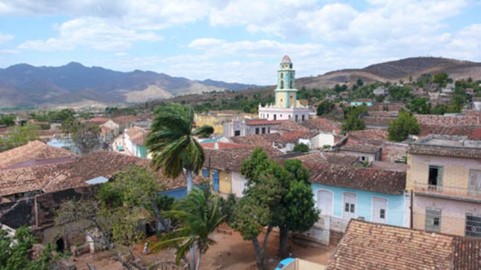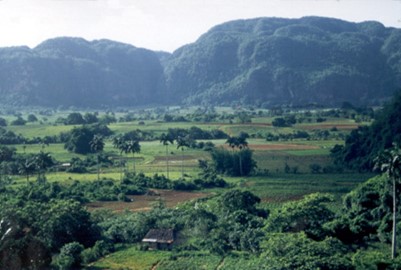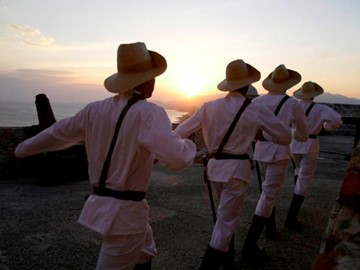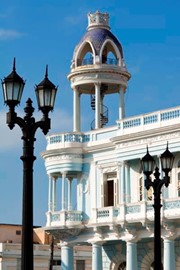category :: cultural
Zuojiang Huashan Rock Art
The Zuojiang Huashan Rock Art, a UNESCO World Heritage site in China, is a collection of ancient cliff paintings created by the Luoyue people between the 5th century BCE and 2nd century CE. Depicting rituals, warriors, and animals in striking red pigment, these artworks offer a rare glimpse into prehistoric culture. Set against dramatic karst landscapes, they preserve a vibrant artistic legacy.
Kulangsu
Kulangsu, a UNESCO World Heritage site in China, is a historic island blending Chinese and colonial architecture from the 19th and early 20th centuries. Known for its car-free streets, Victorian-style buildings, and serene gardens, it reflects a unique cultural fusion from its past as an international settlement. This charming site preserves a legacy of global exchange and architectural beauty.
Grand Canal
The Grand Canal, a UNESCO World Heritage site in China, is an ancient engineering marvel stretching over 1,700 kilometers, connecting major rivers and cities. Constructed starting in the 5th century BC and expanded over centuries, it served as a vital transportation and trade route, facilitating cultural exchange and economic growth. Today, this intricate system of waterways, bridges, and locks stands as a testament to human ingenuity and historical significance.
Cartagena
Cartagena, a UNESCO World Heritage site in Colombia, is a vibrant colonial city famed for its well-preserved 16th-century fortifications and colorful architecture. Encircled by stone walls and dotted with plazas, churches, and pastel-hued buildings, it reflects Spanish colonial influence blended with Caribbean charm. This historic port, once a key trade hub, offers a captivating glimpse into its rich multicultural past.
Santa Cruz de Mompox
Santa Cruz de Mompox, a UNESCO World Heritage site in Colombia, is a colonial town frozen in time, known for its well-preserved Spanish architecture and riverside charm. Founded in the 16th century, its cobblestone streets, ornate churches, and historic homes reflect its past as a thriving trade center. This serene settlement offers a glimpse into Colombia’s rich colonial heritage.
Tierradentro
Tierradentro, a UNESCO World Heritage site in Colombia, is an ancient archaeological site featuring underground tombs carved into volcanic rock by a pre-Columbian civilization. Dating back over 1,000 years, these hypogea are adorned with intricate geometric patterns and vivid paintings. Set amidst rugged hills, this site offers a window into a mysterious and sophisticated indigenous culture.
San Agustín
San Agustín Archaeological Park, a UNESCO World Heritage site in Colombia, is renowned for its extensive collection of pre-Columbian monuments and megalithic statues, dating back to the 1st to 8th centuries AD. The park features over 500 stone sculptures, some towering up to 7 meters, carved by an ancient, little-known culture, depicting human figures, animals, and mythological beings. It serves as a vital window into the religious and social practices of this mysterious civilization, making it one of the m... Read More
Coffee Cultural Landscape
The Coffee Cultural Landscape of Colombia, a UNESCO World Heritage site, is a living testimony to the cultural traditions and sustainable practices of coffee cultivation. Shaped by generations of small-scale farmers, it showcases a harmonious blend of natural beauty, iconic architecture, and rich cultural heritage, reflecting Colombia's deep connection to coffee production and its global significance.
Stone Spheres of the Diquís
The Stone Spheres of the Diquís, a UNESCO World Heritage site in Costa Rica, are a collection of over 300 pre-Columbian stone spheres crafted by the Diquís culture between 500 and 1500 AD. Ranging from a few centimeters to over two meters in diameter, these nearly perfect spheres were likely used for ceremonial or astronomical purposes, though their exact significance remains a mystery. Discovered in the 1930s, they are made from granodiorite and other local stones, showcasing the advanced skill of their cr... Read More
Grand Bassam
Grand Bassam, a UNESCO World Heritage site in Côte d'Ivoire, is a historic coastal town known for its well-preserved colonial architecture from the late 19th and early 20th centuries, reflecting its past as the country's first capital. The site includes notable landmarks like the old French governor’s palace and traditional Nzima fishing villages, showcasing a blend of cultural influences. Recognized for its historical significance, it offers insight into the region’s colonial history and local heritage, ma... Read More
Split
Split, a UNESCO World Heritage site in Croatia, is renowned for its Historical Complex, featuring the well-preserved Palace of Diocletian, built by the Roman Emperor Diocletian in the late 3rd century as his retirement residence. This ancient structure blends seamlessly with medieval and modern elements, including Romanesque churches, Gothic palaces, and a bustling city life that has evolved around it. Inscribed on the UNESCO list in 1979, Split exemplifies a unique fusion of historical architecture and cul... Read More
Euphrasian Basilica Porec
The Euphrasian Basilica in Poreč, Croatia, is a UNESCO World Heritage Site renowned for its exceptional early Byzantine architecture and stunning 6th-century mosaics. Built in the mid-6th century under Bishop Euphrasius, the complex includes a basilica, atrium, baptistery, and episcopal palace, showcasing a blend of classical and Byzantine styles. Its well-preserved mosaics, depicting religious scenes and figures like Bishop Euphrasius himself, highlight its historical and artistic significance, earning it ... Read More
Trogir
Trogir, a UNESCO World Heritage site in Croatia, is a historic coastal town renowned for its well-preserved medieval architecture. Founded by Greeks in the 3rd century BC, it features a stunning blend of Romanesque, Gothic, and Renaissance buildings, including the prominent Cathedral of St. Lawrence. Its charming stone streets and picturesque waterfront reflect centuries of cultural influences, making it a captivating destination for history and architecture enthusiasts.
Cathedral of St James
The Cathedral of St. James, a UNESCO World Heritage site in Croatia, is a remarkable Romanesque monument completed in 1311 after over a century of construction. Built entirely from stone, it showcases intricate architectural details, including a distinctive dome and ornate portals adorned with sculptures by master craftsman Juraj Dalmatinac. The cathedral’s unique blend of Gothic and Renaissance elements reflects its historical evolution, making it a significant cultural and religious landmark. Today, it st... Read More
Stari Grad Plain
Stari Grad Plain, a UNESCO World Heritage site in Croatia, is an ancient agricultural landscape that has remained virtually unchanged since its creation by Greek colonists in the 4th century BCE. Renowned for its stone walls and geometric land divisions, it showcases traditional farming practices and a harmonious relationship between human cultivation and the natural environment.
Dubrovnik
Old City of Dubrovnik, a UNESCO World Heritage site in Croatia, is a stunning medieval city renowned for its well-preserved historic walls, terracotta-roofed buildings, and picturesque Adriatic Sea views. Often called the 'Pearl of the Adriatic,' it boasts a rich history dating back to the 7th century, with notable landmarks like the Rector’s Palace and St. Blaise Church. Its charming cobblestone streets and cultural significance make it a top destination for history enthusiasts and travelers alike.
Havana
Old Havana, a UNESCO World Heritage site in Cuba, is renowned for its rich history and well-preserved colonial architecture. Founded in the 16th century, the city showcases a blend of Spanish influences, evident in its colorful buildings, grand plazas, and historic fortresses. Its vibrant cultural heritage includes a mix of African, Caribbean, and European traditions, reflected in its music, art, and lively street life. Today, Havana stands as a testament to its past, attracting visitors with its timeless c... Read More
Trinidad and the Valley de los Ingenios
Trinidad and the Valley de los Ingenios, a UNESCO World Heritage site in Cuba, is a well-preserved colonial city and surrounding sugar-producing valley that showcase the island's historical and cultural legacy. Founded in the early 16th century, Trinidad features cobblestone streets, pastel-colored buildings, and Spanish colonial architecture, reflecting its prosperity from the sugar trade. The nearby Valley de los Ingenios, with its ancient sugar mills, plantations, and archaeological remains, highlights t... Read More
Viñales Valley
Viñales Valley, a UNESCO World Heritage site in Cuba, is renowned for its stunning natural beauty and cultural significance. This lush, fertile region features dramatic limestone karsts, traditional tobacco farms, and vibrant rural communities that preserve time-honored agricultural practices. Visitors can explore its unique landscape, dotted with mogotes—steep, rounded hills—and underground caves, while experiencing the authentic charm of Cuban countryside life. Its blend of geological wonders and living h... Read More
San Pedro de la Roca Castle
San Pedro de la Roca Castle, a UNESCO World Heritage site in Cuba, is a well-preserved 17th-century fortress designed by Italian engineer Giovanni Battista Antonelli. Constructed between 1638 and 1700, it served as a strategic defense against pirate attacks and foreign invasions, showcasing a blend of military architecture and historical significance. The castle features robust stone walls, multiple levels, and artillery platforms, reflecting its role in protecting the island's southeastern coast. Today, it... Read More
First Coffee Plantations
The First Coffee Plantations, a UNESCO World Heritage site in Cuba, are 19th-century ruins of estates that pioneered coffee production in the Americas. Nestled in lush hills, these sites feature remnants of manor houses, drying platforms, and slave quarters, reflecting the industry’s economic and social history. This landscape preserves a unique blend of agricultural heritage and natural beauty.
Cienfuegos
Cienfuegos, a UNESCO World Heritage site in Cuba, is a 19th-century colonial city renowned for its elegant French-inspired architecture and waterfront charm. Featuring wide boulevards, neoclassical buildings, and a grand theater, it reflects urban planning from Cuba’s sugar boom era. This well-preserved gem offers a glimpse into a refined historical and cultural legacy.
Camaguey
The Historic Centre of Camagüey, a UNESCO World Heritage site in Cuba, is a colonial city known for its labyrinthine streets and vibrant baroque architecture. Founded in the 16th century, it features charming plazas, ornate churches, and clay-tiled rooftops, reflecting Spanish influence. This unique urban layout offers a captivating window into Cuba’s colonial past.
Paphos
Paphos, a UNESCO World Heritage site in Cyprus, is renowned for its rich historical and cultural significance. This ancient city boasts well-preserved archaeological treasures, including intricate Roman mosaics, the Tombs of the Kings, and the remains of a Greek-Roman theater. Its historical importance is tied to its role asa center of worship for Aphrodite, the Greek goddess of love, with sites like the Petra tou Romiou marking her mythical birthplace. Paphos seamlessly blends history with natural beauty, ... Read More
Painted Churches in the Troodos Region
The Painted Churches, a UNESCO World Heritage site in Cyprus, are a collection of ten Byzantine churches renowned for their exceptional frescoes and murals dating from the 11th to 16th centuries. Nestled in a mountainous region, these small, stone-built structures showcase a unique blend of Byzantine and post-Byzantine art, reflecting the island's rich cultural and religious history. Their well-preserved wall paintings depict biblical scenes, saints, and intricate decorative patterns, offering a glimpse int... Read More
